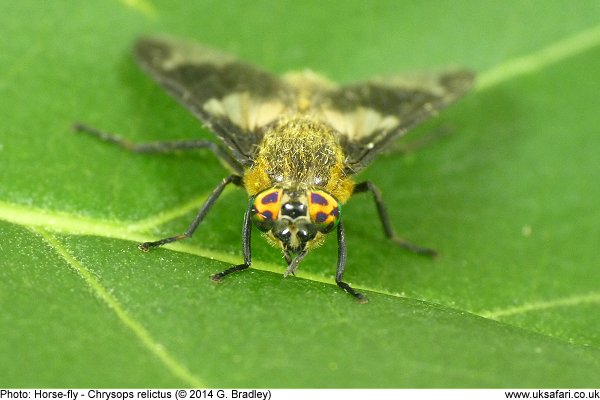 Horse-flies
Horse-fliesIdentify It > Invertebrate Section > Flies Section > Horse-flies >

Scientific: Tabanidae
Size: From 8 to 23mm depending on the species
Distibution: Found throughout the UK.
Months seen: May to September
Food: Females suck the blood of mammals and the males are nectar feeders
Habitat: Fields and hedgerows - especially near water
Special features: Although the male horse fly is a nectar feeder, the female horse fly can give a painful bite with their sharp, piercing mouthparts. The bite leaves a triangular hole in the skin and can cause a large swelling. Unlike mosquitoes, horse-flies make a much lower pitched humming noise when they fly, so you don't always hear them coming.
Their one redeeming characteristic is their amazing eyes, which in a certain light display brilliant bands of colour.
The maggot-like larvae of horse flies live in mud, feeding on decaying vegetable matter, or small creatures, depending on the horse-fly species.
 Related Pages
Related Pages

 Popular Pages
Popular PagesAmphibians, Bats, Badgers, Beetles, Birds, Birds of Prey, Bumble Bees, Butterflies, Caterpillars, Climate Change, Deadly Spiders, False Widow Spiders, Frogs, Funny, Garden Spiders, Glow-Worms, Hedgehogs, House Spiders, Owls, Spiders, Toads, What's Out Now?
Copyright © 2024 G. Bradley UK Safari. All rights reserved | About Us | Links | Advertise | Contributors